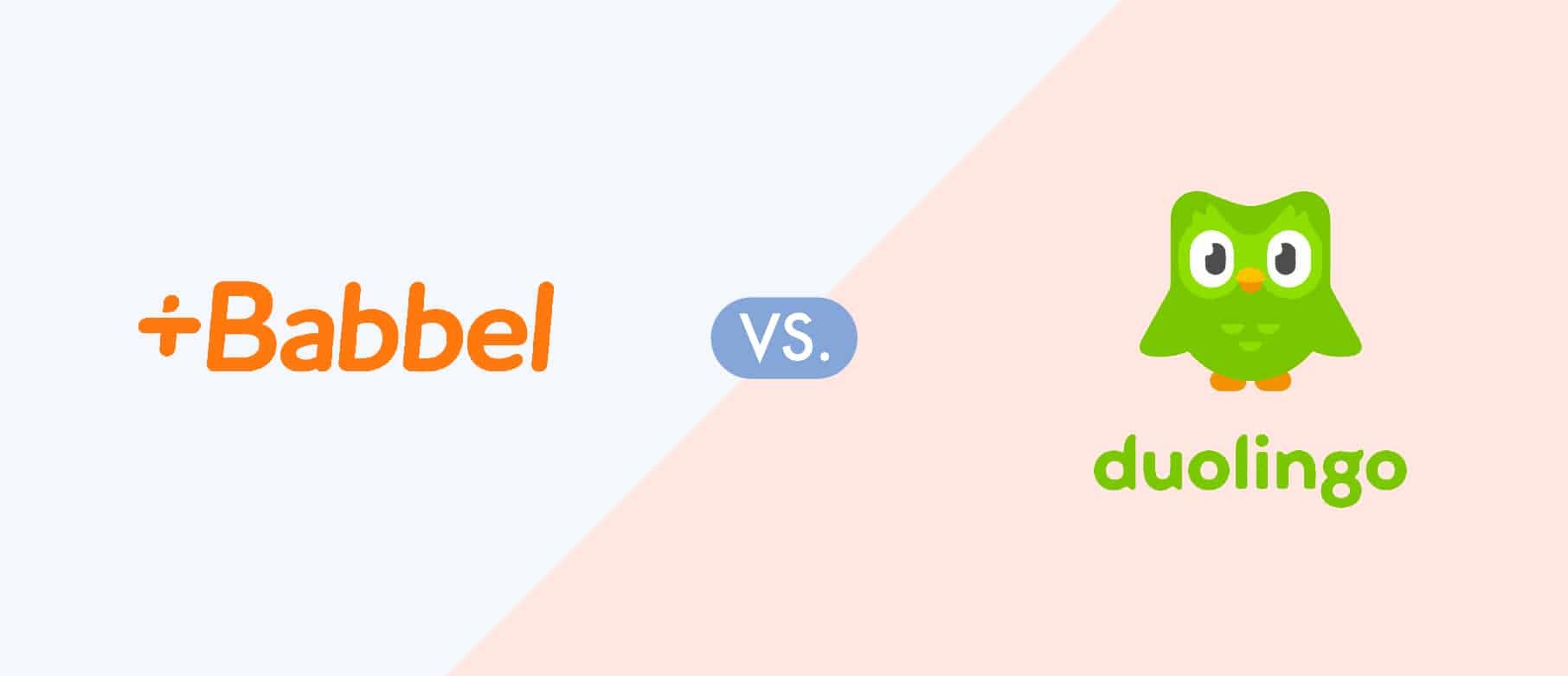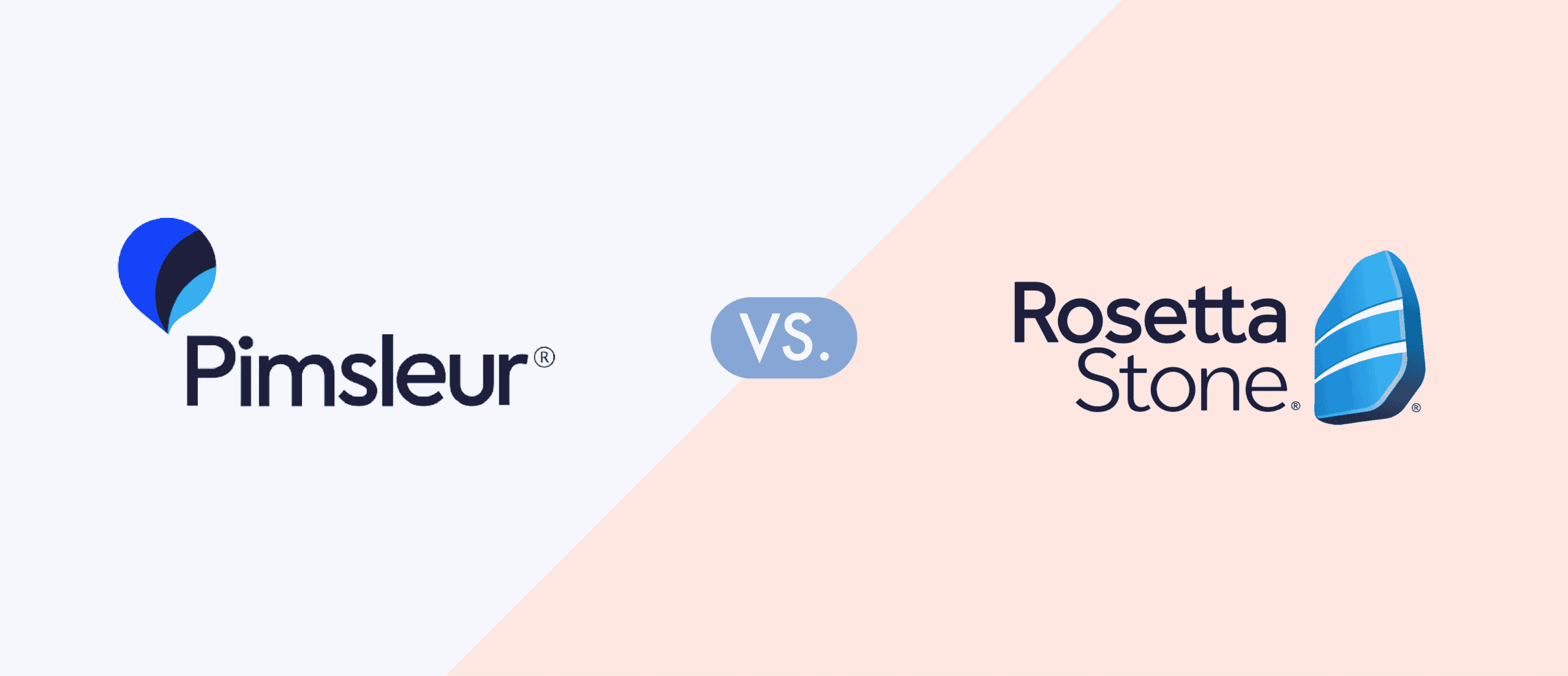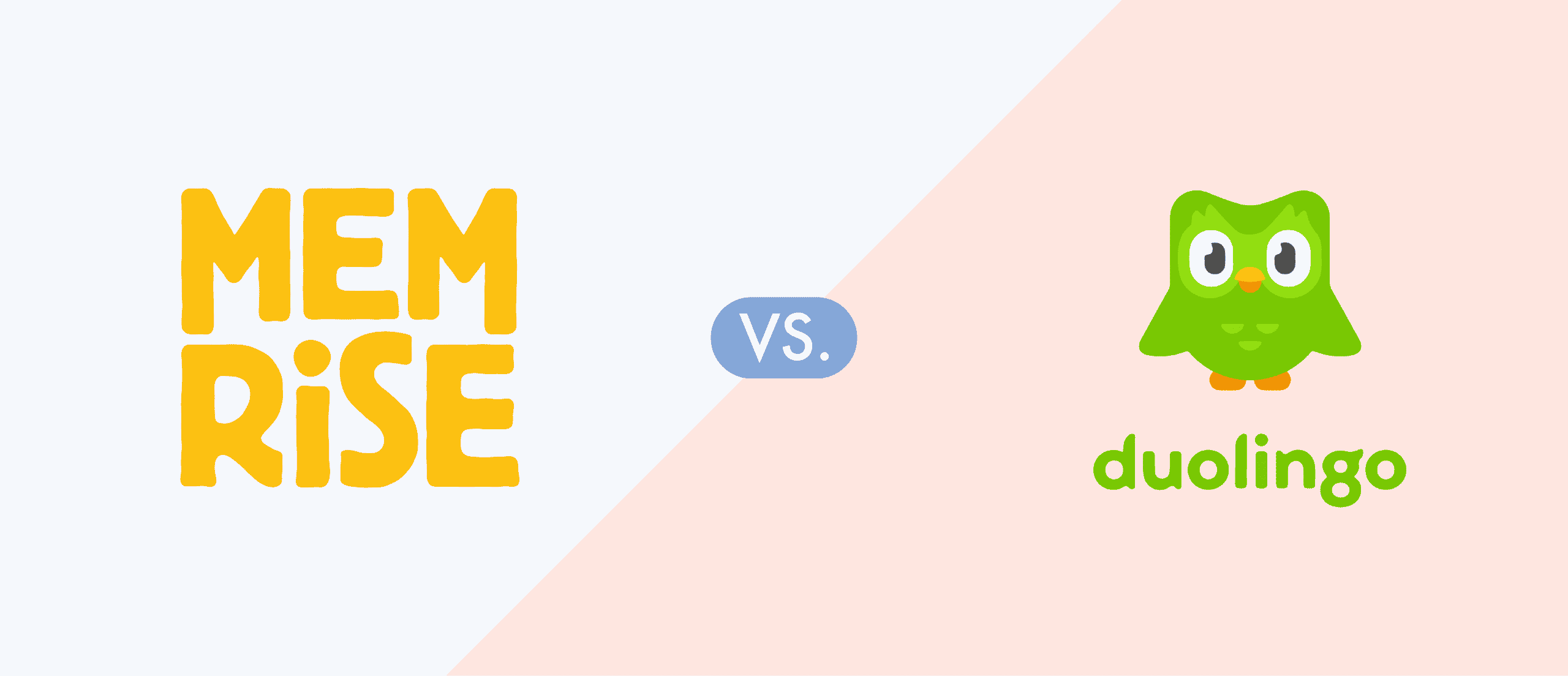Babbel vs. Duolingo
Updated: 13. Mar, 2023
Choosing the right app for learning a new language can be difficult. When choosing a language-learning software, your study style, timetable, ability, and money are some factors to consider.
Two of the most popular apps for language learning are Babbel and Duolingo. Duolingo’s success is because it is “free,” while Babbel is renowned for its viral marketing and TV advertisements. Learning a language via an app like Babbel or Duolingo gives you the freedom to study when and where you choose.
Moreover, they have qualities, commonalities, and substantial distinctions that make them stand out. Learn more about which app could be best for you on your language learning journey by reading this article.
Overview of Babbel
Babbel is a paid language learning app that teaches 14 different languages. It has a wide range of language courses for beginners and intermediates, including grammar lessons, vocabulary lessons, and conversation starters. Babbel was the first language-learning software to be released in 2008. The platform claims “the Babbel Method” is the quickest road to real-life conversations “in as little as three weeks.”
Even though it is a paid language learning app, users know it is less expensive than similar apps. This language learning service provider is known for its emphasis on both quality and value. Each language you choose comes with between 30 and 80 free courses. Subscribers enjoy unlimited access to hundreds of classes, levels, and languages. For pronunciation lessons, Babbel relies on recordings of native speakers. In addition, it uses a sophisticated voice recognition system that delivers excellent results.
Overview of Duolingo
Currently, Duolingo is being used by more than 21 million people worldwide. The amount of people using Duolingo is quite astounding. It offers over 30 different languages. The app has courses to help you with reading, writing, and speaking. Also, if you and your friends are learning, you can compare your progress with theirs, making the app more enjoyable and motivating.
The average duration of a Duolingo lesson is between five and ten minutes. Quick-hit and tasks that include listening drills, filling in the blanks and matching pairs, verbal practice, writing entire sentences, and completing simulated conversations make up the Duolingo classes.
Instead of teaching you general vocabulary, this program teaches you specific vocabulary terms that may be found in everyday situations and more bizarre and absurd ones. Artificial intelligence (AI) is used to construct most lessons rather than human instructors. Unlike other language learning methods, Duolingo focuses only on the language itself and not on the cultural nuances and settings in which it is used.
For Duolingo, it is important to keep its app up-to-date by listening to its users’ views, so they can always improve their lesson plans. As a result of user feedback, Duolingo is continually evolving and introducing new languages that are not yet available in the app store.
You can use Duolingo for free if you are willing to put up with the advertisements. There are points to be earned in its daily lessons and activities. People all over the globe use it because it is absolutely free to use.
Similarities between Babbel and Duolingo
Convenient
Both Babbel and Duolingo allow you to study on the go, no matter where you are. Whether you are someone with much free time or not, Duolingo and Babbel let you learn at your own pace. You do not have to go far to enroll in regular lessons, nor do you have to stick to a strict schedule. All you need is a smartphone, access to the internet, and an email account, which almost everyone has these days.
Courses
Courses in both applications take 10-20 minutes to complete. They are designed to be consistent, engaging, and accommodating to your busy schedule. Learners in both Babbel and Duolingo begin with the fundamentals of a language, such as the alphabets. Afterward, they progress to more complex vocabulary and grammar. Spacing repetition is used in both applications to help you better retain the information you are learning.
Fluency
Additionally, both language apps will not make you fluent but will get you to a basic level where you should be able to compose short phrases with different grammatical constructs in the back of your mind. Since Babbel and Duolingo give a diversity of grammar and vocabulary, your reading level should be quite good. Nevertheless, if you are studying to become competent in a foreign language, you should complement Duolingo and Babbel with a language course or practice with a native speaker.
Differences between Babbel and Duolingo
The following are some of the differences between Babbel and Duolingo:
1. Mode of learning
Duolingo uses the context method of teaching. This is crucial since many language schools rely on rote word memorizing. Rote word memorizing can be tiresome and unsuccessful in long-term memory preservation. Duolingo lets you get used to utilizing the vocabulary terms and grammatical points in a variety of formulations as a result of its contextual presentation. The things you learn in Duolingo will ultimately come more readily to you if you study them with the support of a language class or a native speaker rather than learning them alone. With Babbel, you will learn the language in a way that is closer to a standard and formal classroom system.
Both language learning apps include fundamental grammar and vocabulary training for all of their languages. However, the emphasis on conversational language is greater in Babbel.
This is what encourages some customers to upgrade to Babbel’s premium service. Babbel takes a more direct approach in teaching you the language with simple explanations, while Duolingo concentrates on grammar and sentence structure.
Unfortunately, Duolingo’s lessons are not usually organized logically and do not actually concentrate on usable language; in fact, you will encounter a lot of absurd statements. Flashy and vibrant visuals that are more suitable for kids and younger learners may be found on Duolingo.
All the “childlike” features on Babbel that “might” help you stay interested do not exist. This is so because Babbel’s design targets more “serious adult learners” who want a simpler method of language instruction without the added gamification.
Additionally, Babbel teaches cultural information about Italy (such as regional distinctions) rather than simply vocabulary and sentence structure, while Duolingo ignores cultural context.
So, to sum up, if you are searching for something simple and enjoyable to start with, choose Duolingo. Give Babbel a try if you wish to take your education more seriously.
2. Speaking Exercises
Babbel does a better job than Duolingo at strengthening your speaking abilities. Their verbal exercises are a bit more substantial than the ones included in Duolingo’s classes.
You are effectively expected to repeat words and phrases in a vacuum using Duolingo. Furthermore, Duolingo’s speech recognition technology is adequate.
Additionally, when you make a mistake, you have the opportunity to learn from it when you use Babbel. End of lesson corrections and after running flashcards are available on the program’s desktop version. This is useful since most individuals learn best by recognizing where they have gone wrong.
3. Learning levels
While Duolingo is a good option for occasional language learners, Babbel is ideal for those who want to study the language fully.
Duolingo is not a magical ‘cure-all’ that will allow you to learn any language fast and easily with only a few clicks on your mobile screen. It is just for complete novices. After a certain level of proficiency in a language, this method is no longer helpful for learning. Everything starts and finishes at the most basic level.
Babbel does an excellent job at offering useful vocabulary, especially at the beginning levels. If you use Babbel, you will learn a large number of frequent and important terms in your target language. It encourages students to write rather than just read and emphasizes conversational learning, with most lessons taking the form of actual dialogues.
4. Cost
Duolingo has free and paid membership options. In contrast, Babbel has a variety of subscription programs that need monthly payments. If you want to learn more than one language on Babbel, you will subscribe more than once.
For Babbel, the monthly plan costs $14 per month, followed by the 3-month and 6-month plans at $10, $8.50, and $7 per month, respectively. The 12-month plan offers the greatest value at roughly $7 per month.
Duolingo is free, but you will continuously see advertisements and often be prompted to do different surveys. But if you put in the effort to study new languages, it will not take you long to pick them up.
Meanwhile, Duolingo Plus costs $9.99 per month if you pay for a full year in advance. In this plan, there are no ads. In addition, you may download courses to use offline on the mobile app and get unlimited access to the mobile app.
Since most of its users are on the free plan, Duolingo makes money via advertising campaigns and sells user-translated terms to major companies. It is sponsored through very inexpensive certification exams ($20) and a paid membership, which grants offline access and ad-free usage to premium customers.
5. Languages to learn
Duolingo offers languages like Spanish, French, Italian, Portuguese, German, Dutch, Swedish, Norwegian, Danish, Irish, Ukrainian, Turkish, and Esperanto. The app does not limit the number of languages you can learn at the same time. As a result, you may effortlessly switch between multiple languages anytime.
Babbel offers lesser languages. Depending on the language you are studying, the amount of courses offered on Babbel varies greatly. Popular languages such as Spanish, French, and German will offer many more courses than less popular languages such as Danish and Russian. These less popular languages often have a good range of starting courses, while intermediate contents are scarce to non-existent.
6. Customization
Babbel allows you to personalize the lessons based on the language you know. As a result, if you are studying French and speak English, your course contents will vary from those of a user who solely speaks German. However, this feature does not exist in Duolingo.
7. Tons of Extras
All the additional resources that Duolingo provides are another point of differentiation. With Duolingo, users get a translation dictionary, forums where you can interact with other students to discuss your program suggestions, a regular podcast that is very amazing, and short tales to improve your reading and listening comprehension.
Duolingo also offers a collection of online activities that let you communicate with other students in real-time. Learners may benefit from these excellent, cost-free resources.
Babbel vs. Duolingo Pricing
Duolingo offers a free version of its platform, which includes most of its core features, but with ads and limited access to some features. Duolingo also offers a premium subscription called Duolingo Super. The plan costs $9.99 per month or $79.99 per year. Duolingo Plus offers features such as an ad-free experience, offline access to lessons, and the ability to track your progress.
On the other hand, Babbel offers a free trial. But its platform is primarily subscription-based. Babbel offers a six-month subscription that costs $50.70 per month ($8.45 per month), a yearly subscription that costs $83.43 (or $6.95 per month), and a lifetime subscription that costs $349. Babbel’s subscription includes personalized lesson plans, speech recognition technology, and access to all courses and lessons.
Frequently Asked Questions
Is Duolingo better than Babbel?
It is hard to say. Despite their many similarities and differences, these applications have their strengths and weaknesses. Many users have given Duolingo greater ratings than Babbel in their assessments of the two services. Several users, on the other hand, strongly believe that you get what you pay for with Babbel, and there is no question that certain aspects of Babbel are always superior to those of Duolingo’s free edition.
How Much Do Babbel And Duolingo Cost?
The cost of a monthly membership to Babbel ranges from $6 to $13, depending on the duration of the subscription acquired. Several genuine Babbel discount promo codes may lower the cost of certain memberships.
It is well-known that Duolingo provides a free, restricted product financed by advertisements. This free product restricts the amount of information users learn daily and various other features and functions. Premium Duolingo Plus subscriptions, which range in price from $7 to $10 a month depending on the kind, are an option for people who prefer an ad-free learning experience and a few more features.
What is the Best Language Learning App?
What works best for you depends on how you study and how much money you have to work with. There is no one-size-fits-all software or platform.
What is a Major Difference between Duolingo and Babbel?
Unlike Babbel’s more conventional method of teaching foreign languages via full courses, Duolingo offers a more gamified approach and a more modernized learning experience.
Can you Learn a Target Language with Babbel or Duolingo?
To overcome your first skepticism about online classes, you need to conduct your research and choose the best way to study based on how you learn. A successful language-learning app has to include a few key features: interactive content, scheduled repetition and review, and real-world activities that allow students to test their newly acquired language skills.
Conclusion
By now, the comparison of Duolingo and Babbel has helped you make a more informed selection. On the surface, you may think Duolingo and Babbel seem to be extremely similar. The tasks are quite similar to the methods used to teach the language. It is not until you go a little further that you notice the differences between these two platforms. The key difference between these two online language programs is their main focus.
Duolingo is fantastic as a free resource. It makes learning more entertaining and less daunting. It also provides a ton of languages and teaches them via tons of engaging activities. Duolingo has a particular allure because of its appealing design and user experience, which makes it easier to connect with the language fast. This encourages the user to adhere to the training and readily remember resources.
Babbel is pretty excellent. Unfortunately, a membership-only plan offers access to one language. The teaching style is significantly clearer and emphasizes conversational language more than Duolingo. It is consequently a little better for serious learners who want a firmer foundation and a deeper comprehension of the language.
Babbel, on the other hand, spends a lot of effort giving thorough explanations of each foreign language’s many components, such as the grammatical rules and cultural contexts of words and sentences, enabling a deeper grasp of the learning content.
Table of contents
Read more
Rosetta Stone vs Pimsleur
While looking for the best app to learn a new language, you must have come across Rosetta Stone and Pimsleu...
READ ARTICLE
Duolingo vs. Busuu
The benefits of language learning extend beyond pure fun. It may be quite helpful in many facets of your li...
READ ARTICLE
Duolingo vs. Memrise
Making life decisions can be tough. Choosing between Duolingo and Memrise for your language learning journe...
READ ARTICLE



